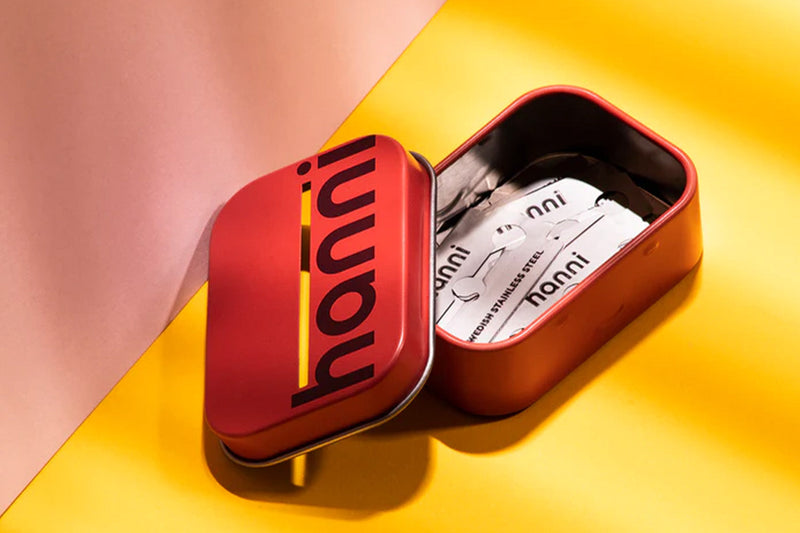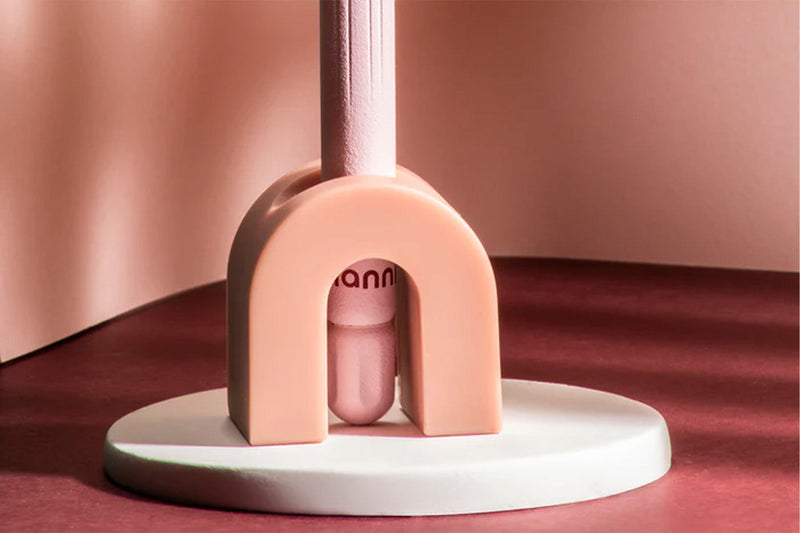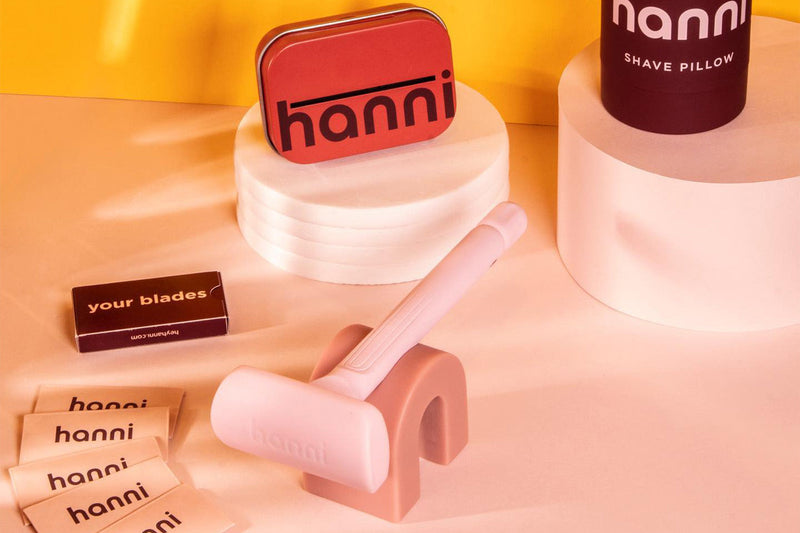Did you know that your skin is the largest organ in your body? That’s right, your skin is an organ! It provides the incredibly important function of protecting your body from the outside world.
This organ is by no means fragile. It actually is very durable and resilient, considering all the things it has to protect the inside of your body from.
At Hanni, we’re all about making sure this all-important barrier is as healthy as possible — and keeping your skincare routine simple and customized is one of the best ways to do just that. Still, some things are just out of our control, and it’s helpful to know what to do when new issues pop up out of the blue.
There are a lot of skin conditions that are caused by outside influences like shaving, allergies, or other environmental factors. There are also skin conditions for which there is no one clear cause and every case is a little different, like keratosis pilaris.
If you experience keratosis pilaris, you might want to know a little more about why it appears — and what you can do about it.
What is keratosis pilaris?
Keratosis pilaris — affectionately referred to as chicken skin — is a benign and common skin condition characterized by red bumps affecting the skin on the arms, legs, and even the face.
Keratosis pilaris is harmless, but if you’ve seen these little bumps on the backs of your legs before, you know they can be super irritating. So, why do these bumps happen in the first place?
This condition is caused by dead skin cells plugging the hair follicles, resulting in multiple bumps and pimples across the skin. It is most often seen on the cheeks, arms, thighs, and buttocks.
Keratosis pilaris looks a bit like acne, another common pore-clogging condition that creates red and pink bumps. With keratosis pilaris, though, the affected area often feels dry, rough, and similar to sandpaper. It can feel itchy and irritated, but it generally is not painful.
Keratosis pilaris’ name actually comes from one of its causes: keratin. A buildup of keratin and dead skin cells clog the hair follicles and pores in the skin. Keratin is a hard protein that makes up hair, skin, and nails.
As irritating as the condition is for anyone who has it, you can rest assured knowing that it is not contagious. It only affects the individual who is dealing with it and cannot spread to other people at all.
Keratosis pilaris also is harmless, so it won’t affect any part of the body other than the skin.
Keratosis pilaris symptoms
If you’ve come across a bump or two, you might be wondering if it’s keratosis pilaris.
The symptoms below can help you figure out whether its keratosis pilaris or another condition — but when in doubt, it’s always helpful to reach out to a medical professional:
1. Red or pink bumpy skin
2. Clogged pores
3. Irritated skin
4. Dryness and scaly skin
5. Rough, sandpaper-like skin
6. Itchiness
Who is affected by keratosis pilaris?
There is no singular cause for keratosis pilaris, which can make it difficult to treat. Thanks to dermatologists, though, we do know who is most likely to be affected by it.
There are two age groups who are at a higher risk for developing keratosis pilaris: babies younger than two years old and adolescents. These two demographics are the Most Likely to have chicken skin but not the only ones.
There have been cases of chicken skin in adults (usually under the age of 30), but it doesn’t tend to last long.
If an adult does develop this condition, keratosis pilaris is known to be worsened during pregnancy. Thankfully, keratosis pilaris is harmless, so it shouldn’t be of too much concern beyond being annoying.
Okay, so why do some people get keratosis pilaris and other people are happily living a keratosis pilaris-free life? This is another condition that we can complain about to our parents — that’s right, we’re talking genetics.
Research still needs to confirm this genetic link, but keratosis pilaris has been linked to other genetic conditions and traits such as asthma and eczema
Who is at increased risk?
It is not known what exactly causes chicken skin, but there are a number of allergies and conditions that are associated with it. Knowing your own existing conditions and lifestyle could help when figuring out how to treat chicken skin.
Similar to acne — that other pesky pore-clogging condition — the chance of having chicken skin increases around puberty.
There are a number of conditions that could increase the chances of developing keratosis pilaris:
1. Asthma
2. Eczema
3. Dry skin
4. Hay fever
5. Obesity
7. Blood relatives who have keratosis pilaris
Diy solutions & topical home remedies
Treating keratosis pilaris Can be difficult if you aren’t quite sure what is causing it. While we can’t cure keratosis pilaris (yet), there are quite a few natural remedies that can help. Once again, mother nature provides!
Exfoliate
Skin affected by keratosis pilaris can be very sensitive, so make sure you are careful with it. Exfoliating the skin can be a helpful natural treatment, as it removes dead skin cells on the surface. This can keep pores from being clogged even further.
There are many ways to exfoliate, but we recommend leaning toward soft exfoliating techniques like our Multi-tasking Shower Scarf. It can deeply exfoliate Anywhere — even that hard-to-reach spot in the middle of your back. You know the one.
Other gentle exfoliating methods include the use of a body scrub or a serum that includes glycolic acid or salicylic acid.
Shorten showers
Long showers feel amazing, but too much time in the water (especially hot water) can dry out the skin and worsen your symptoms.
When you have chicken skin, it’s best to keep your showers short, sweet, and not too hot. Also, take a second look at your soap or body wash — you might be drying out and irritating your skin even more every time you lather up.
Keratolytic
Keratolytic is a chemical exfoliator. When applied to the skin, it helps to remove the excessive buildup of skin cells caused by keratosis pilaris. After you gently exfoliate your skin with our Shower Scarf, apply the keratolytic to the affected area.
Moisturize your skin
After you use your favorite cleanser, apply your moisturizer of choice to the areas affected by keratosis pilaris.
We recommend the Hanni Shave Pillow, but we understand if you want to play the field before making a commitment.
If you’re shopping in your pantry, coconut oil is a natural moisturizer. Its anti-inflammatory properties help to calm irritation while it cleanses and hydrates the skin. Aloe is another natural option worth trying if you aren’t a fan of coconut oil’s texture or smell.
(pro tip: after moisturizing, make sure to put on a generous amount of sunscreen to avoid irritation from time outside. We love a little fun in the sun, but our skin might not.)
Eat anti-inflammatory foods
There has been some anecdotal evidence that diet affects the frequency and severity of keratosis pilaris outbreaks. Some people recommend decreasing gluten in your diet.
There’s no scientific evidence to back up these claims yet, so no need to put down that dinner roll! However, there are some ways you can change your diet to help ease the symptoms of keratosis pilaris.
Because chicken skin involves a lot of inflammation of the skin, increasing the number of anti-inflammatory foods in your daily diet could help. Try these delicious ingredients on for size:
1. Omega-3-rich foods like salmon
2. Green and leafy vegetables
3. Beetroots
4. Berries
In addition to diet adjustments, it is so important to drink enough water every day. If you don’t drink enough water throughout the day, it’ll show on your skin. We recommend having a large reusable water bottle to carry around with you as you go along with your day!
What if at-home treatments aren’t working?
There is no known cure for keratosis pilaris, but there are many ways to go about treating the symptoms. If topical home remedies don’t work for you, there’s no need to be discouraged.
Dermatologists are well-versed in the symptoms of chicken skin. They’re the experts for a reason.
Because everyone’s skin is so unique, having a dermatologist make individualized recommendations might be the best option for some people. And that’s totally fine! Sometimes, natural solutions will work, and sometimes we need to find other routes.
Bye-bye bumps!
Keratosis pilaris, affectionately called chicken skin, is a harmless skin condition characterized by small bumps often on the arms, thighs, buttocks, and cheeks. This skin can feel dry, rough, itchy, and irritated. Though the condition is benign, that doesn’t make it any less annoying for some of us who’d rather just not deal with it.
Keratosis pilaris affects babies, children, and teens at a higher rate than other age groups. There have been cases in adults, but they usually resolve quickly with age.
Though there is no single known cure for keratosis pilaris, there are a variety of solutions for managing the symptoms. Whether natural or dermatologist-prescribed, there are many strategies for calming skin affected by keratosis pilaris.
Sources:
How to Treat Keratosis Pilaris at Home | Aad
Keratosis Pilaris | Healthline
What Can I Do About the Rough Skin on My Arms? | Kids Health






